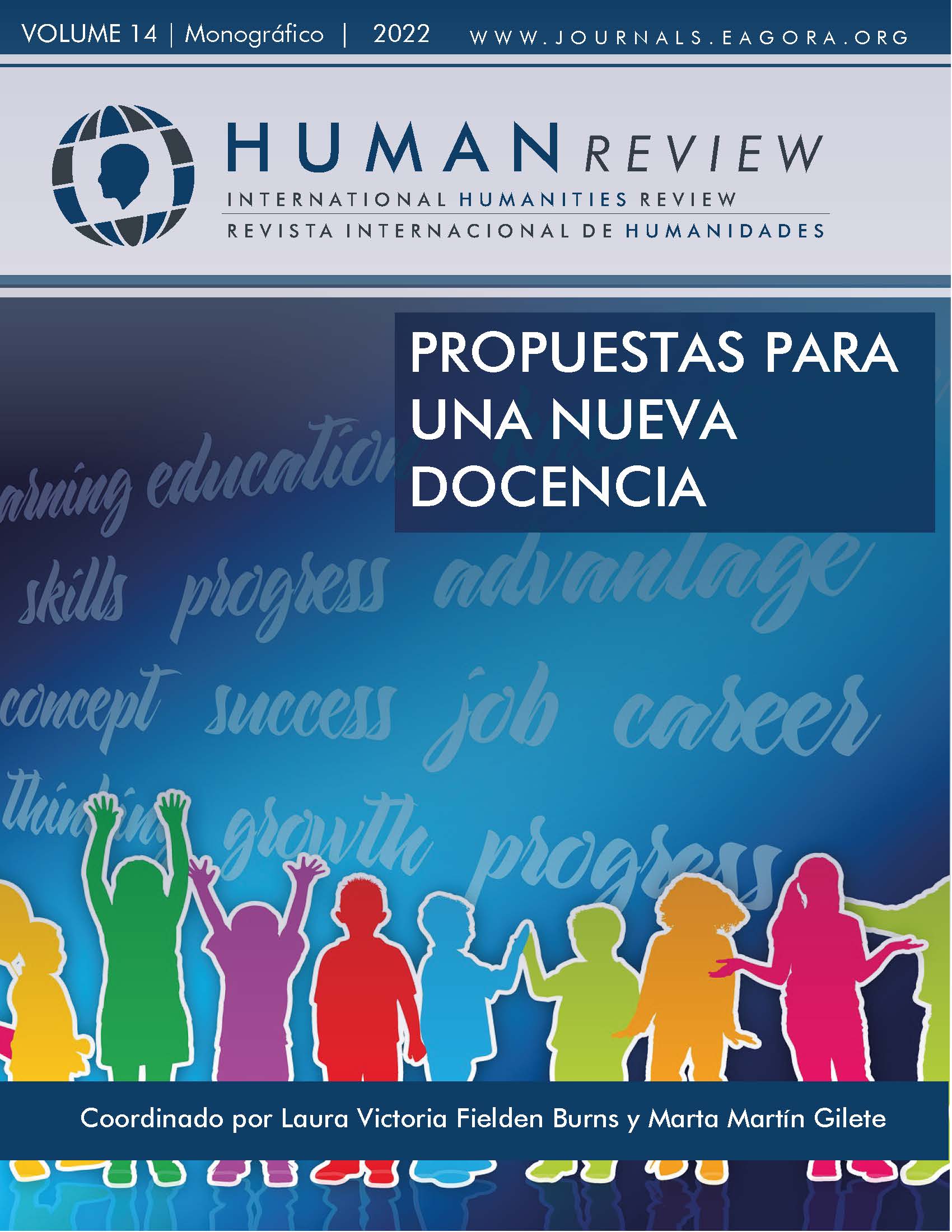Vocabulary differences in children with and without language delay
DOI:
https://doi.org/10.37467/revhuman.v11.4188Keywords:
Vocabulary, Semantics, Language, Delay, DisorderAbstract
Vocabulary in children with Language Development Disorder (LDD) or with Language Delay (LD) is poorer than in children with typical language development, so we want to know what differences exist between them. 66 infants between 3 and 5 years old have participated; It has been assessed what vocabulary they know, it has been determined that they have less vocabulary (52%) than their homonyms (69%), with the exception of the transport category, in which they have the same results. Finally, the list of categories that children with RL or TDL need to work on is determined.
References
Andreu-Barrachina, L., Gerardo-Aguado, M., Cardona-Pera, M. C., y Sanz-Torrent, M. (2014). El trastorno específico del lenguaje: diagnóstico e intervención, Vol. 294. UOC.
Aparicio, M. e Igualada, A. (2019). El desarrollo del lenguaje y la comunicación en la infancia. UOC.
Auza, B. y Peñaloza-Castillo, C. (2019). Factores individuales y familiares en el Trastorno del Desarrollo del Lenguaje (TDL). Iztapalapa. Revista de Ciencias Sociales y Humanidades, 40(86), 41-66. https://doi.org/10.28928/ri/862019/atc2/auzaa/penalozacastilloc DOI: https://doi.org/10.28928/ri/862019/atc2/auzaa/penalozacastilloc
Ayuso-Lanchares, A. y Ruíz-Requies, I. (2020). Intervención lingüística en niños con retraso del lenguaje utilizando los bits de inteligencia. En Felipe, A., Peña, B. y Bobkina, J. (Ed.) Estudios sobre innovaciones educativas (pp. 87-98). Colección: Ediciones Universitarias. Ediciones Pirámide.
Bishop, D., Snowling, M. J., Thompson, P. A., & Greenhalgh, T. (2016). CATALISE: A multinational and multidisciplinary Delphi consensus study. Identifying language impairments in children. PLOS one, 11(7). https://doi.org/10.1371/journal.pone.0158753 DOI: https://doi.org/10.1371/journal.pone.0158753
Cabello, F. & Mazón, C. (2018). Iconicidad y facilidad de aprendizaje de los símbolos pictográficos ARASAAC. Revista de Logopedia, foniatría y audiología, 38(3), 95-104. https://doi.org/10.1016/j.rlfa.2018.04.002 DOI: https://doi.org/10.1016/j.rlfa.2018.04.002
Carrasco, A., García, R., y Hervás, M. (2015). Revisión de programas de intervención dirigidos a alumnos de infantil y primaria con trastorno específico del lenguaje. ReiDoCrea: Revista electrónica de investigación y docencia creativa, (4), 156-161. DOI: https://doi.org/10.30827/Digibug.37033
Garrote, M. (2008). Corpus de Habla Infantil Espontánea del Español. (Tesis doctoral) Universidad Autónoma de Madrid. Madrid.
Gil J. A. (2016). Técnicas e instrumentos para la recogida de información. UNED.
Gleason, J. B., & Ratner, N. B. (2010). El desarrollo del lenguaje. Pearson educación.
Gómez, M. B. (2019). A propósito de las redes semánticas en el léxico disponible de escolares de primero de Educación Primaria, Ogigia. Revista electrónica de estudios hispánicos, 25. https://doi.org/10.24197/ogigia.25.2019.165-183 DOI: https://doi.org/10.24197/ogigia.25.2019.165-183
González-Garay, A., Díaz-García, L., Chiharu, M., Anzo-Osorio, A. y García, S. (2018). Generalidades de los estudios de casos y controles. Acta pediátrica de México, 39(1), 72-80. DOI: https://doi.org/10.18233/APM39No1pp72-801542
Goodman, J., Dale, P. & Li, P. (2008). Does frequency count? Parental input and the acquisition of vocabulary. Journal of Child Language 35(3), 515–31 https://doi.org/10.1017/S0305000907008641 DOI: https://doi.org/10.1017/S0305000907008641
Kim, S. W., Jeon, H. R., Park, E. J., Chung, H. J., & Song, J. E. (2014). The differences in clinical aspect between specific language impairment and global developmental delay. Annals of rehabilitation medicine, 38(6), 752.https://doi.org/10.5535/arm.2014.38.6.752 DOI: https://doi.org/10.5535/arm.2014.38.6.752
Law, J., McKean, C., Murphy, C. A., & Thordardottir, E. (2019). Managing Children with Developmental Language Disorder. Routledge. DOI: https://doi.org/10.4324/9780429455308
Maldonado. E. (2018). Metodología de la Investigación social: Paradigmas: cuantitativo, sociocrítico, cualitativo, complementario. Ediciones de la U.
Mendoza, E. (2016). Trastorno específico del lenguaje (TEL). Comercial Comercial Grupo ANAYA, SA.
Rice, M. L. & Hoffman, L. (2015). Predicting vocabulary growth in children with and without specific language impairment: A longitudinal study from 2; 6 to 21 years of age. Journal of Speech, Language, and Hearing Research, 58(2), 345-359. https://doi.org/10.1044/2015_JSLHR-L-14-0150 DOI: https://doi.org/10.1044/2015_JSLHR-L-14-0150
Rodríguez, T. (2020). El desarrollo de la competencia léxico-semántica a través de la morfología léxica. Revista de Filología, 278-288. https://doi.org/10.25145/j.refiull.2020.40.13 DOI: https://doi.org/10.25145/j.refiull.2020.40.13
Sentis, F., Nusser, C. y Acuña, X. (2009). El desarrollo semántico y el desarrollo de la referencia en la adquisición de la lengua materna. Onomázein, 20(2) 147-191. DOI: https://doi.org/10.7764/onomazein.20.06
Villafáñez, M. D. (2016). El aprendizaje del tiempo y su enseñanza en la Educación Primaria. Tabanque: Revista Pedagógica, (29), 43-68.
Downloads
Published
How to Cite
Issue
Section
License
Those authors who publish in this journal accept the following terms:
- Authors will keep the moral right of the work and they will transfer the commercial rights.
- After 1 year from publication, the work shall thereafter be open access online on our website, but will retain copyright.
- In the event that the authors wish to assign an Creative Commons (CC) license, they may request it by writing to publishing@eagora.org









